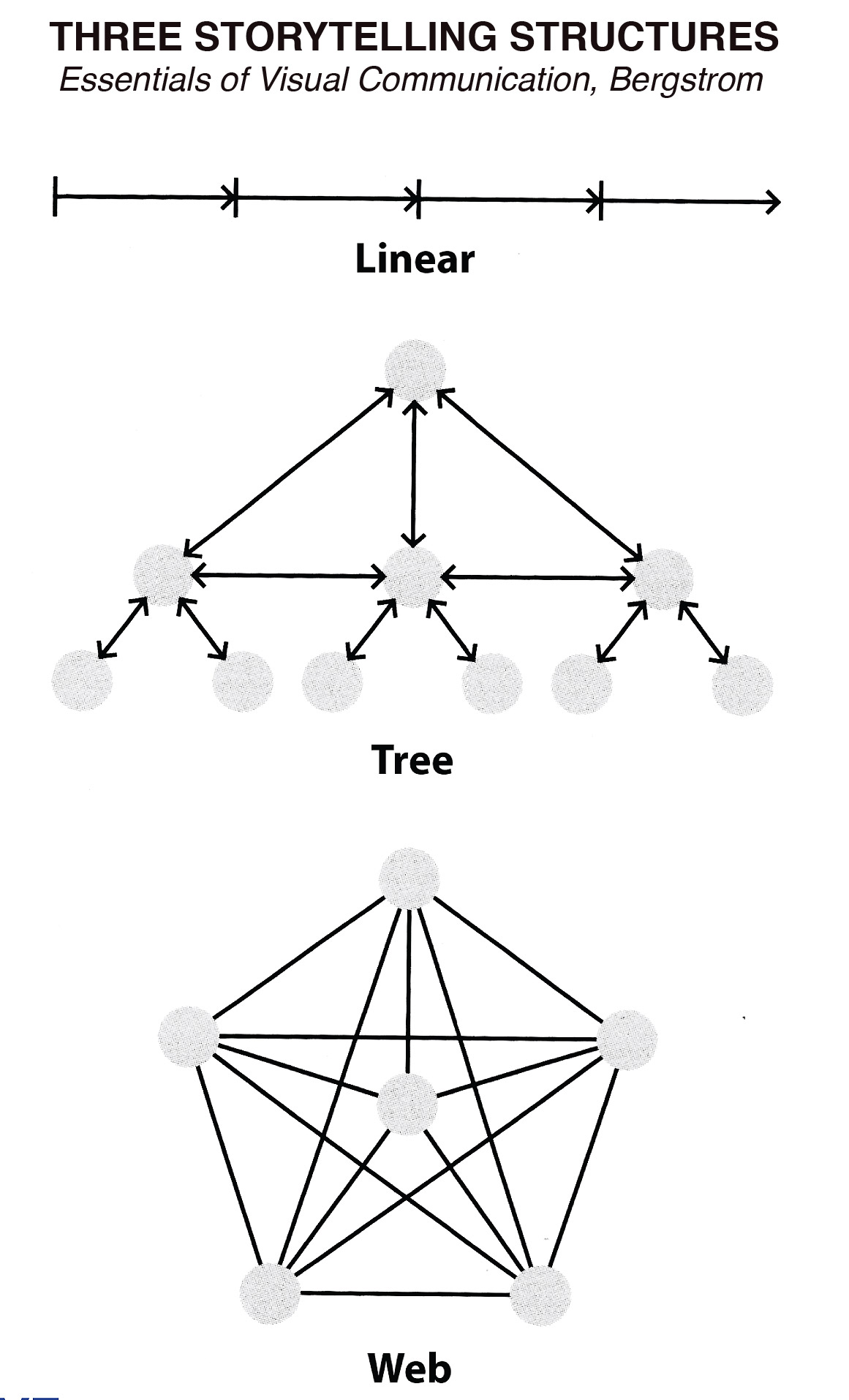
Week 8 - STORYTELLING
WHAT IS A STORY?
A narrative of integrated events – leading the reader to a conclusion or message
TYPES OF STORYTELLING:
Most storytelling is sequential
- BEGINS to introduce the “problem” or story theme
- MIDDLE explains and leads the story forward
- ENDS with a conclusion/message/solution/logo
Most think of stories as being narratives that are dramaturges (dramatic compositions) of events viewed in books, film/video, or interactive media. By moving from page-to-page, cell-to-cell and screen-to-screen, typography and images flow to draw the audience through the story to the conclusion
STORYTELLING WITH TYPE:
Graphic designers use storytelling methods to create powerful typographic designs to advertise a message or dramatize text. Using hierarchical and legibility techniques from “three-read” principles to sequencing of problem-to-solution, even static one-page designs can tell a story. Working with interactive techniques of motion graphics, kinetic typography has become popular to visually dramatize an ad, poem, speech, jingle, song or other series of words.
Examples:
- Static storytelling: Posters, calligrams, ads
- Kinetic typography – Songs, poems, speeches
THREE STORYTELLING METHODS:
• CLOSED – DRAMATIC – Very specific actions absorbing the audience to follow the narrative and consequences. Relies on sequencing and start/middle/end formats
• OPEN – NON-DRAMATIC – These stories leave plenty of room for interpretation, reflection, and interaction by the audience
• INTERACTIVE – This occupies the ground between the two previous methods and is especially popular for online readers allowing both sequencing and interaction of the audience
THREE COMMON STRUCTURES OF STORY TELLING:
Planning a structure for your story depends on how you want the audience to “read” the text, what method of storytelling you are going to incorporate and what media you are going to use to impact the content effectively.
• LINEAR – This is the most common structure. It is the sequential – straight line from beginning to end which takes the reader from one page to the next, from simple information to conclusion, from problem to solution.
• TREE – The (upside down) tree is ideal for web as well as print. The content is easily structured in clear groups and subgroups (hierarchy) from headline-subhead-text or splash page-to-clicks. It works well for product information and for reaching individual chapters. It allows the reader to go to different subgroups rather than have to plow through all the text sequentially to reach a specific area important to the individual reader.
• WEB – On the web this is sometimes the best option which essentially combines different structures. With a hub in the middle, one can go to various information or points that are all still linked to each other.

TELLING A STORY IN TYPE using Print
TELLING A STORY IN TYPE using motion
Although the examples below were created using After Effects, a highend animation software, they will give you ideas that you can translate into your assignment using Indesign for the motion part of this assignment.
From link above:
Cee Lo Green video (contains offensive language but great type)
Starbucks – If you vote
Live Outloud! (simple kenetic)
Social Life with Friends (kenetic poem)Kanye West Concious (video)
Type Animation (video)